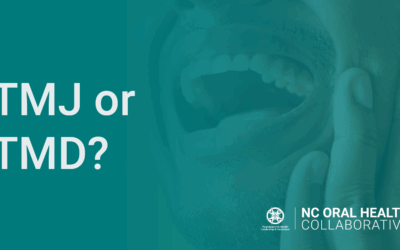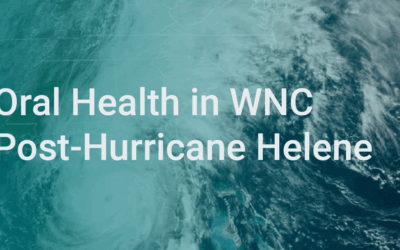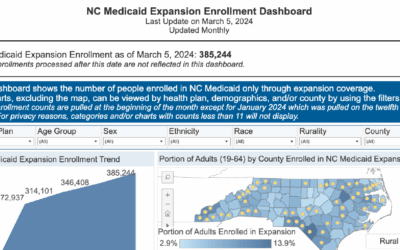Blog Posts
Diversity in Dentistry
The oral health workforce has long struggled with racial, ethnic, gender, and socioeconomic diversity. According to a recent North Carolina Institute of Medicine task force report, White males continue to represent the majority of dentists, while White females have...
TMJ or TMD?
If you’ve ever experienced pain or discomfort in your jaw, you might have heard someone casually refer to it as “TMJ.” But what does that really mean? And is it accurate? It’s common for people to mix up TMJ, which refers to the temporomandibular joint itself, with...
Oral Health in WNC Post-Hurricane Helene
Natural disasters impact every aspect of our lives in obvious and unexpected ways—oral health is no exception. As the climate crisis continues, we see increasingly catastrophic storms worldwide, and areas such as Western North Carolina (WNC) that were previously...
Health Literacy and Communication in Oral Health Care
Visiting the dentist can be anxiety-inducing, leading people to avoid seeking care. The common fear of the unknown, financial concerns, and past negative experiences can intensify these worries. Luckily, there are many ways to address dental anxieties and help improve...
How to Become a Dental Assistant
Dentists, dental assistants, and dental hygienists work together as a team, making sure a dental office functions like a well-oiled machine. Have you ever considered a career as a dental assistant? If you have, NCOHC has some tips for you! As a dental assistant, you...
Oral Health Care Integration Case Study Part 2: Social Work in Dentistry
“It’s uncomfortable to think of a social worker in your space, and it’s uncomfortable to think about asking patients the questions that we ask. So, if it feels uncomfortable, lean into it because there’s going to be something good that comes from it.” The University...
Oral Health Day 2024 Recap
Thank you to all who joined us for Oral Health Day 2024! We’re excited to share that we had our highest participation yet. This year, NCOHC presented two new awards and we heard from expert speakers, including a “North Carolina’s Oral Health Workforce, by the Numbers”...
Dental Anxiety and The Role of Providers in Facilitating Approachable Care
“I love our pediatrician, but I pray that he doesn’t leave our area because there are so many providers leaving,” said Rachel, a mother of two who lives in Wayne County, North Carolina. “It’s going to be hard for our family if he does.” “For me personally, if my son...
Medicaid Expansion in North Carolina: April 2024 Updates
“Our partners in this effort helped us form one of the most unlikely bipartisan, cross-industry coalitions ever assembled in North Carolina–and we succeeded.” — Care4Carolina Executive Director Abby Emanuelson speaking about Medicaid Expansion in North Carolina...
Oral Health Care Integration Case Study Part I: Social Work in Dentistry
“I don’t just want whole-person care happening in the clinic, I want to see whole-person education as well.” Research shows that up to 80 percent of a person’s overall health can be attributed to non-medical factors. These social drivers of health (SDOH)* pose...











